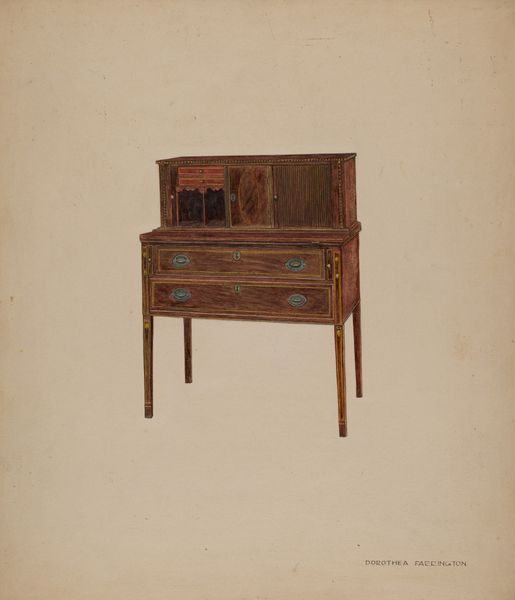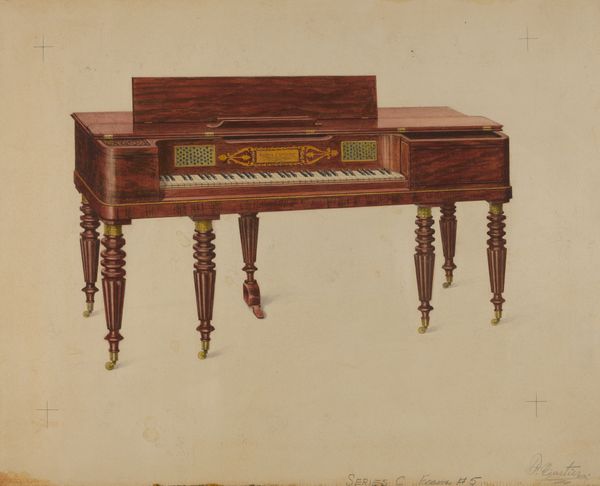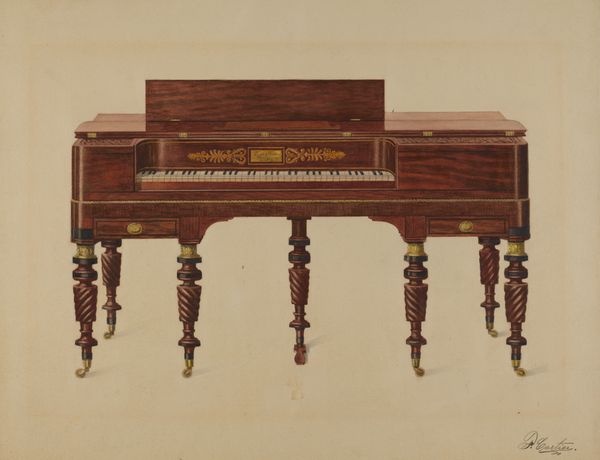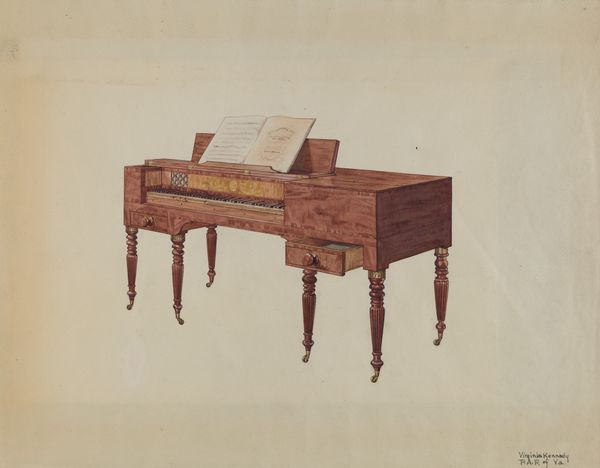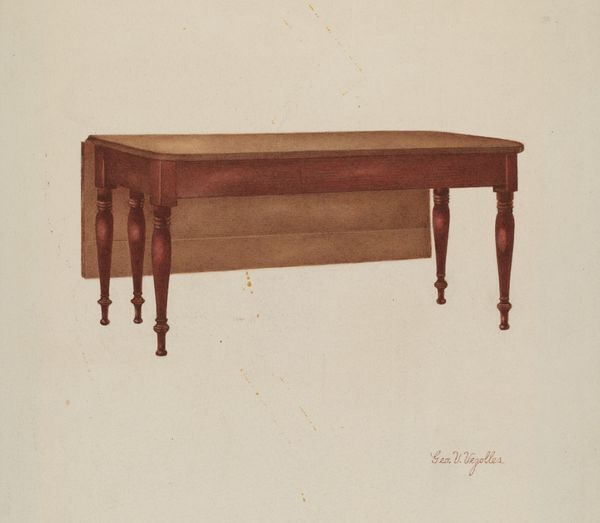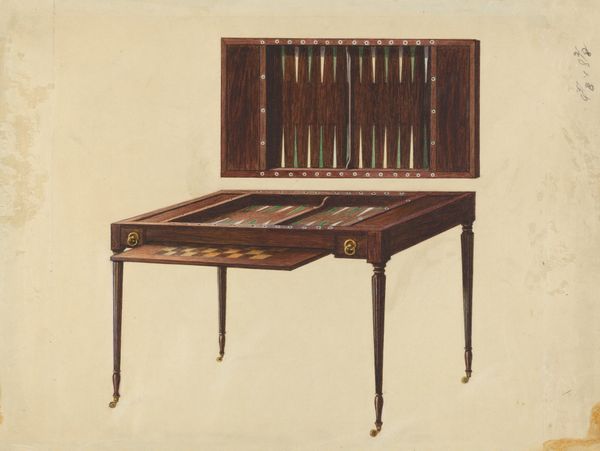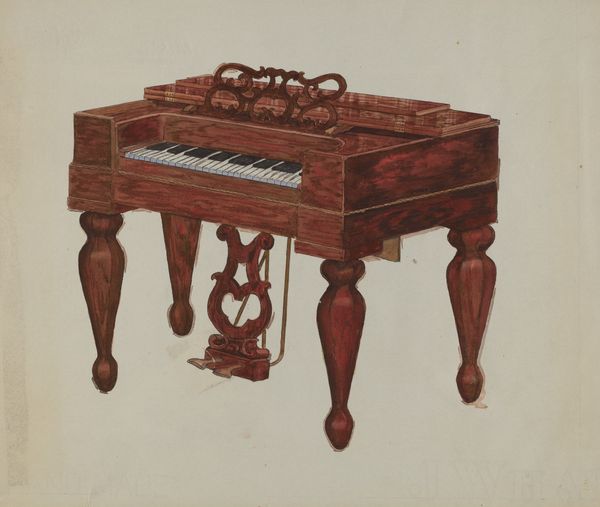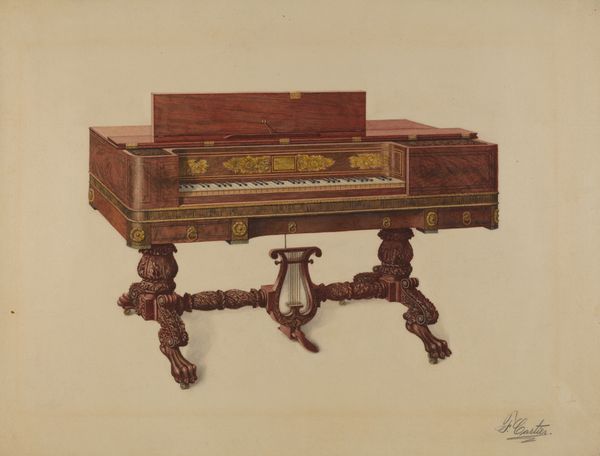
drawing
#
drawing
#
toned paper
#
water colours
#
pottery
#
possibly oil pastel
#
stoneware
#
underpainting
#
watercolour bleed
#
watercolour illustration
#
watercolor
#
statue
Dimensions: overall: 37.4 x 28.7 cm (14 3/4 x 11 5/16 in.) Original IAD Object: 42"high; 36"long; 24"deep. See data sheet for dets.
Copyright: National Gallery of Art: CC0 1.0
Curator: Marie Alain created this drawing, simply titled "Desk," around 1940. It appears to be executed with watercolours, maybe with the addition of oil pastels on toned paper. It has a surprisingly serene quality, don't you think? Editor: Serene, yes, in its presentation. But what's immediately striking is the detail rendered with those materials. Look at how carefully each element is articulated. This desk screams of a particular type of industrialization and labour in woodworking that shaped furniture production mid-century. Curator: Exactly! The desk as an object—particularly in the 1940s—became a site of burgeoning administrative labour, inextricably linked to expanding bureaucratic systems in both government and the private sector. This drawing speaks to the cultural elevation of that professional, white-collar world. Editor: Absolutely. And the medium chosen is telling as well. Watercolour, often viewed as a more "delicate" art form, lends a layer to the furniture typically made for a man, it speaks to who occupies these workspaces – or who wants to occupy these spaces. Consider the skill involved in achieving such a precise depiction with watercolours; the labour here, to render even simple stoneware. It asks us about production, about class aspirations, and even about gender roles during that period. Curator: Indeed. Watercolour was seen as accessible, especially for women artists and amateurs, while still signifying "culture". In this case, Alain harnesses those connotations to subtly comment on a shifting societal landscape where these traditionally gendered forms are colliding. It allows, within that, for accessibility within a changing workplace. Editor: Looking closer, the watercolour bleed on this work seems both intentional and uncontrolled. As if highlighting the potential, or perhaps pre-determined, failure that lingers as we craft in and imagine working from these spaces. Curator: An interesting thought! In any case, Alain’s “Desk” provides a fascinating lens through which to consider the intersection of work, culture, and material production in mid-20th-century society. Editor: Right, this wasn’t just a desk but is actually a representation of evolving working culture and accessible means of creation which speaks volumes of that time.
Comments
No comments
Be the first to comment and join the conversation on the ultimate creative platform.

